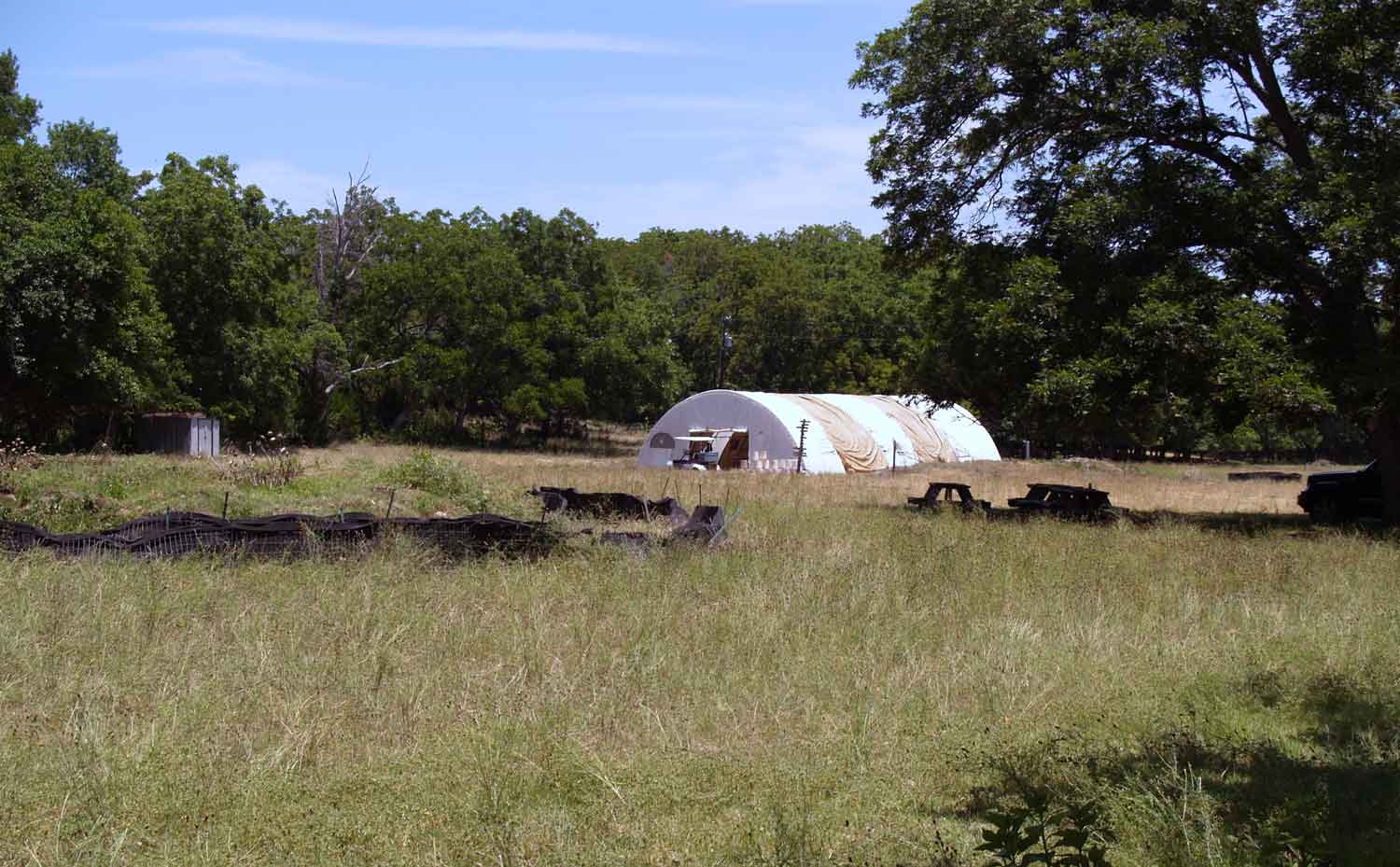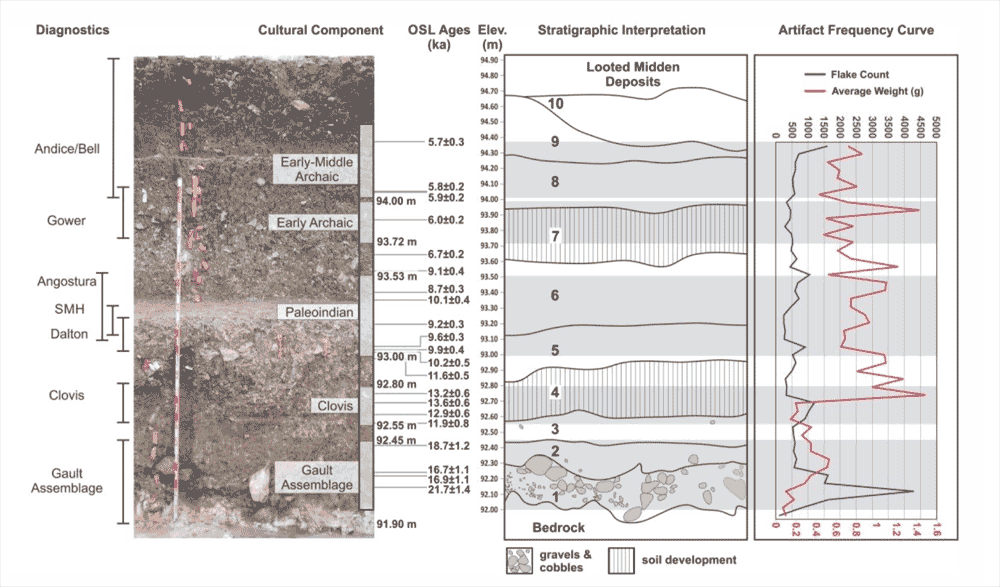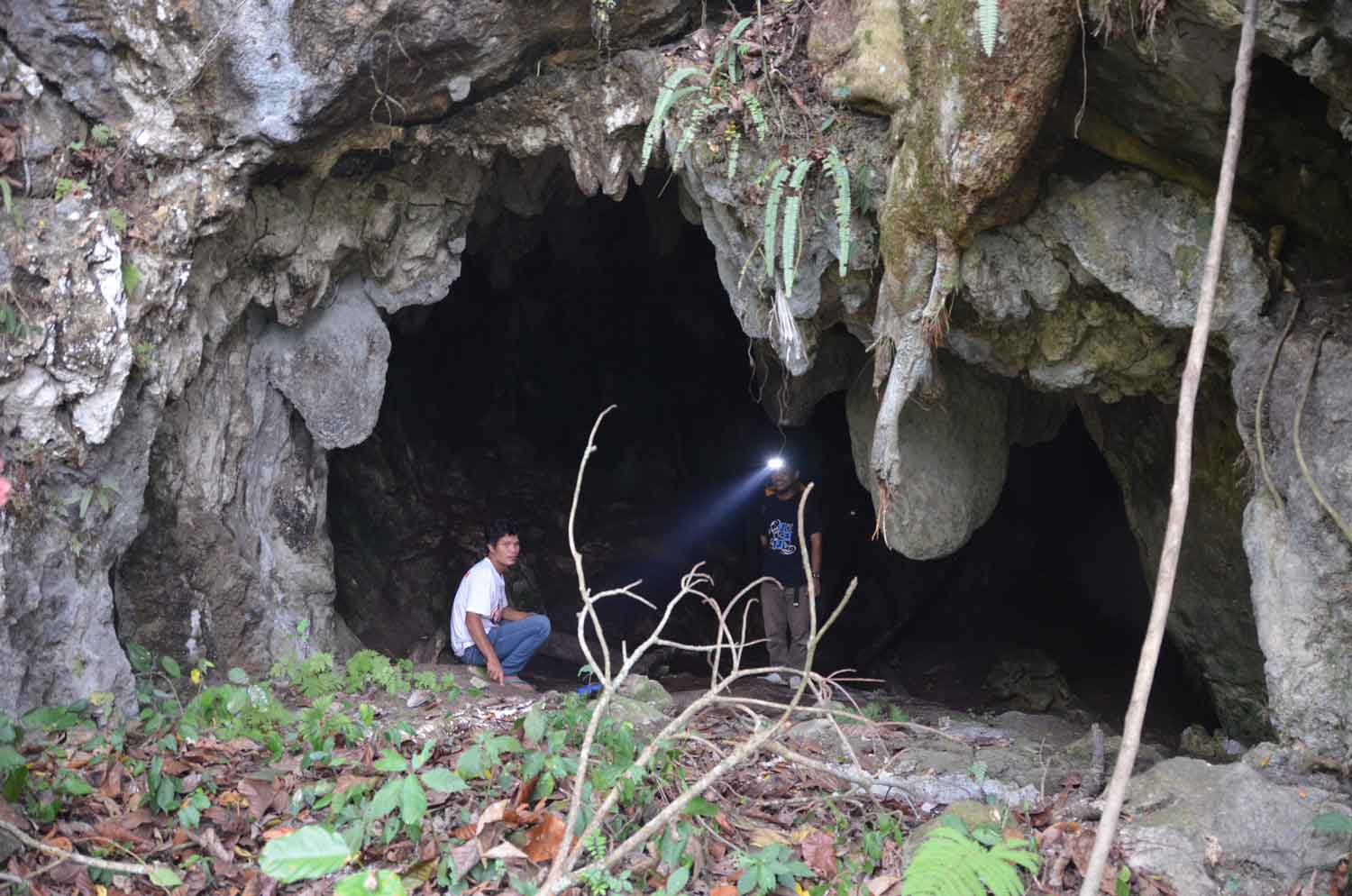Artifacts of a pre-Clovis tradition from the Gault site, Texas
A 2018 paper by Thomas Williams and coworkers documents a Native American group that existed as early as 16,000 years ago.

The Gault site, on Buttermilk Creek near Austin, Texas, is one of the most significant early American archaeological sites. The whole site covers an enormous area, with excavations that have been carried out formally and informally for more than a hundred years. Scientific investigation of the site in recent decades has focused upon a number of distinct excavation areas.
This week, Science Advances published a new paper by Thomas Williams and coworkers describing their work in Area 15 of the Gault site. Their paper documents a rich, previously unknown culture that existed more than 16,000 years ago.
They call this early tradition the “Gault Assemblage”.

A number of sites in North America preserve artifacts proposed to be earlier than the spread of the Clovis tradition, around 13,500 to 11,500 years ago. The Gault site is very interesting because it presents a pre-Clovis archaeological tradition in stratified context beneath Clovis archaeological material. The new paper provides an optically-stimulated luminescence (OSL) chronology for the entire archaeological sequence at the site. The team obtained age estimates for four samples from the Gault Assemblage layers, which all lie between 16.7 and 21.7 thousand years ago. They also dated four samples from the overlying Clovis layers, all between 11.9 and 13.2 thousand years ago.

There is not a sterile layer between Clovis and Gault Assemblage, but the flake count in that interval is quite low, and the Clovis itself is low-representation compared to the much earlier Gault Assemblage layers. It would seem hard to explain away this assemblage as a product of artifact migration downward from Clovis or later layers.
That is relevant because several years ago, a team of scientists criticized the interpretation of another pre-Clovis assemblage stratified beneath Clovis material. This site, also on Buttermilk Creek, is called the the Debra L. Friedkin site, with the pre-Clovis material first published by Michael Waters and colleagues in 2011 in Science. In Waters’ and colleagues’ (2011) description, a pre-Clovis artifact assemblage between 15.5 and 13.2 thousand years ago is stratigraphically below Clovis at the site, and differs from the Clovis assemblage in many ways. Waters and coworkers called this the “Buttermilk Creek Complex”. They suggested that this was evidence for a tradition earlier and different from Clovis.
Juliet Morrow and colleagues (2012) objected to this interpretation. They offered the alternative interpretation that (a) the apparently early age of this assemblage might be the result of downward migration of isolated artifacts from higher, Clovis layers, and (b) even if the site itself is chronologically early, it may simply be an early variant of the Clovis tradition.
Jennings and Waters (2014) responded with a statistical comparison of Buttermilk Creek Complex with Clovis, concluding that they are different and distinguishable on technical grounds, although the Buttermilk Creek might have been antecedent to the Clovis. And Driese et al. (2013) undertook a close analysis of the sediments, concluding that layers were not mixed, and downward vertical displacement of material could not have been substantial.
I review this mainly to show that a number of archaeologists found the earlier claim of a stratified pre-Clovis-to-Clovis context to be controversial, and it gave rise to both a published critique and subsequent research. I imagine that similar criticism may emerge of this current research study.
In the new paper on the Gault site, Williams and colleagues do not provide a comparison between the Gault Assemblage and the Buttermilk Creek Complex. Considering that the Gault Assemblage may be 2000 years or more earlier than the pre-Clovis material from the Debra L. Friedkin site, they may not be comparable. But this seems like an obvious comparison that I’d like to see.
As an aside, for those who want to know more about work at the Gault site, earlier this year, SAPIENS ran a book excerpt by Craig Childs about the site. This gives some nice context for the excavations: “In the Land of the Mammoth Eaters”.
References
Williams TJ, Collins MB, Rodrigues K, Rink WJ, Velchoff N, Keen-Zebert A, Gilmer A, Frederick CD, Ayala SJ, Prewitt ER. 2018. Evidence of an early projectile point technology in North America at the Gault Site, Texas, USA. Science Advances 4: eaar5954. doi:10.1126/sciadv.aar5954
Waters MR, Forman SL, Jennings TA, Nordt LC, Driese SG, Feinberg JM, Keene JL, Halligan J, Lindquist A, Pierson J, Hallmark CT, Collins MB, Wiederhold JE. 2011. The Buttermilk Creek Complex and the Origins of Clovis at the Debra L. Friedkin Site, Texas. Science 331: 1599-1603. doi:10.1126/science.1201855
Morrow JE, Fiedel SJ, Johnson DL, Kornfeld M, Rutledge M, Wood WR. 2012. Pre-Clovis in Texas? A critical assessment of the “Buttermilk Creek Complex”. Journal of Archaeological Science. 39:3677-3682. doi:10.1016/j.jas.2012.05.018
Jennings TA, Waters MR. 2014. Pre-Clovis lithic technology at the Debra L. Friedkin site, Texas: Comparisons to Clovis through site-level behavior, technological trait-list, and cladistic analyses. American Antiquity. 79(1):25-44. doi:10.7183/0002-7316.79.1.25
Driese SG, Nordt LC, Waters MR, Keene JL. 2013. Analysis of site formation history and potential disturbance of stratigraphic context in vertisols at the Debra L. Friedkin archaeological site in central Texas, USA. Geoarchaeology. 28:221-248. doi:10.1002/gea.21441
John Hawks Newsletter
Join the newsletter to receive the latest updates in your inbox.



